
Lot 544
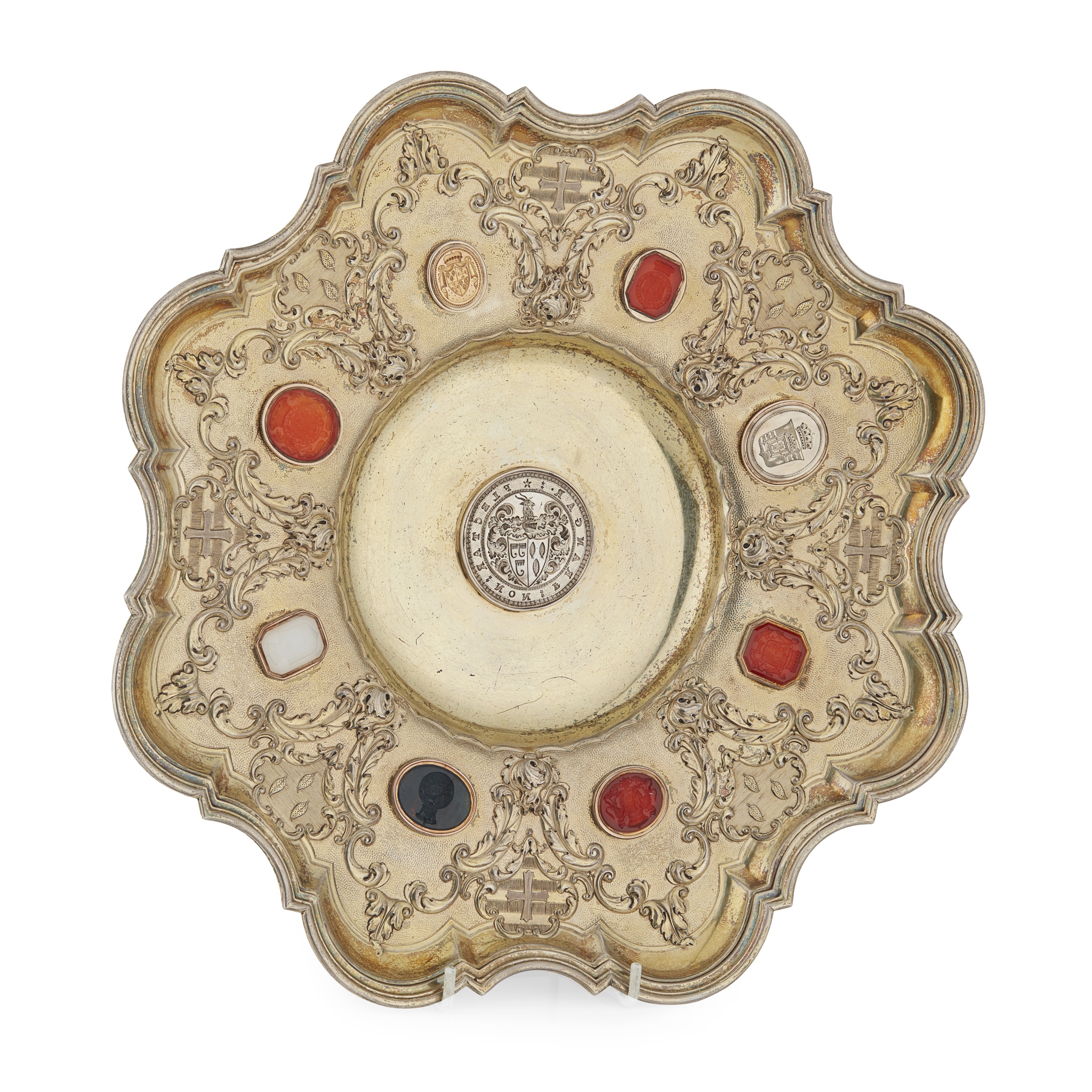
THE DUKE AND DUCHESS OF SUTHERLAND WILLIAM IV SEAL SET SILVER-GILT CHARGER
PAUL STORR, LONDON 1834
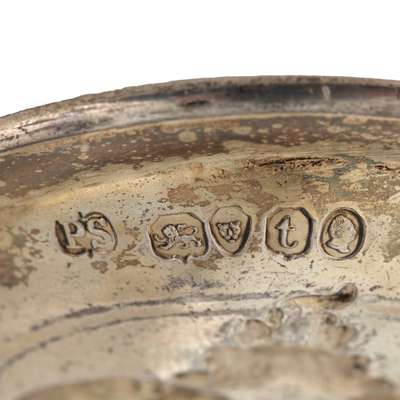
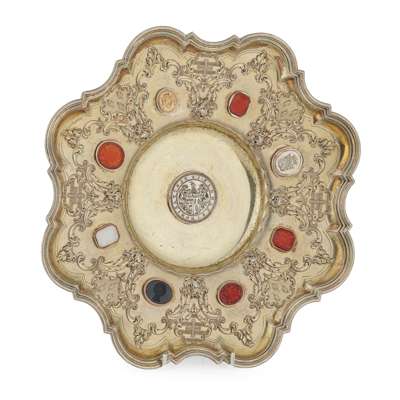

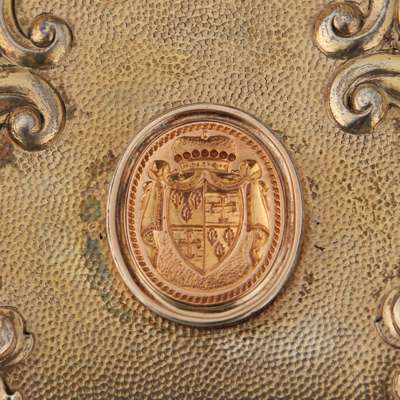

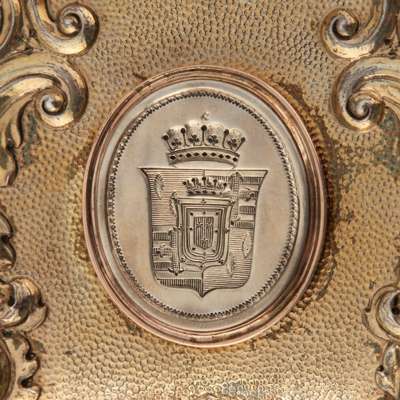
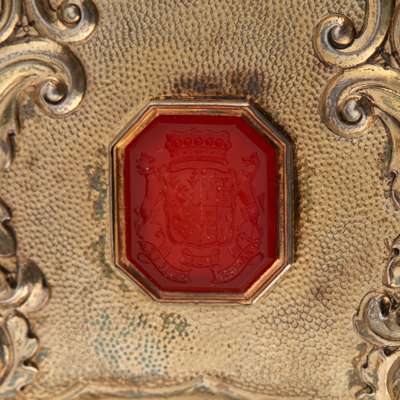
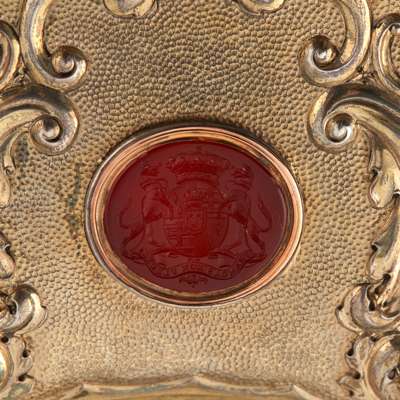
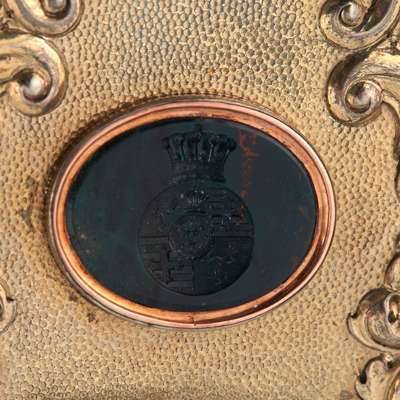
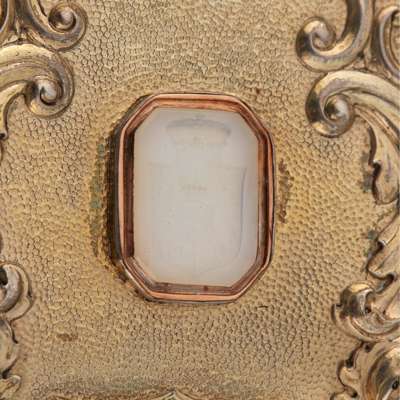



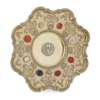


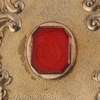
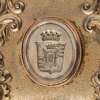
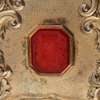
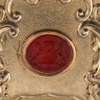
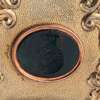

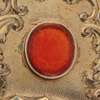
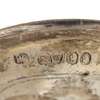
Scottish Works of Art & Whisky
Auction: Lots 413 - 580 | 21 August 2024 at 10am
Description
Of stylised octofoil outline, with embossed foliate scroll decoration throughout, set with nine various seals
Dimensions
34cm diameter, 35.5oz (gross weight)
Provenance
George Granville Leveson-Gower, 2nd Duke of Sutherland K.F. (1786-1892), thence by descent
Christie's, London, 13th November 2018, lot 384, sold for £10,000
The Matrix Collection
Footnote
At one point, one of the wealthiest families in Great Britain, the marriage alliance of the Leveson-Gower family and the Sutherland family found its success in the landed nobility of the Sutherland family combined with the affluence of the Leveson-Gower family.
This charger commemorates this union and the accomplishments of the family. Most likely commissioned by George Granville Leveson-Gower, the 2nd Duke of Sutherland (1786 – 1861), the date suggests that it was in memoriam of his father George Granville Leveson-Gower the first Duke of Sutherland (1758-1833). The Dukedom was only confirmed in 1833, months before the death of the first duke and would therefore be a celebration of this inauguration and achievement. Each seal acknowledges the important family members and the contribution to their rise. There are also marital arms recognising the marriage in 1785 between George Granville Leveson-Gower, 1st Duke of Sutherland and Elizabeth Sutherland (1765- 1839), which fortified the union and created the dynasty still in existence to this day.
The Leveson-Gower family had previously ascended politically, but it was the inheritance through a maternal uncle, Francis Egerton, 3rd Duke of Bridgewater in 1803, that really propelled the family. The inheritance included the Bridgewater Canal and a major art collection. They also owned estates in Staffordshire, Yorkshire, and Shropshire which all contributed to their rising status in British society.
The Sutherland family, on the other hand, had been admitted into the Scottish landed nobility since the 13th century. The family in the 18th century made their money from slave plantations in Jamaica but did not have the same magnitude of wealth as the Leveson-Gower family. When Elizabeth’s father, the 18th Earl (1735–1766) passed away, due to primogeniture, it was not guaranteed that Elizabeth would inherit but was only confirmed by the House of Lords in 1771. This confirmation made her an enticing match for the well-to-do Leveson-Gower who she married in 1785.
Together, Elizabeth and George Granville known as Lord and Lady Stafford set about making Dunrobin in the Scottish Highlands a profitable estate and are most known for the controversial Highland clearances. Dunrobin is still the main seat of the family under the current 7th Duke.
As one of the wealthiest families in the UK, it is unsurprising that they chose Paul Storr, deemed one of the most prolific and successful British silversmiths for the commission of this family relic. At a time that has often been considered the period that saw the greatest demand in the production and trading of silver wares, Storr always ensured that exceptional craftsmanship was maintained at the highest level.
Following Storr’s early personal success, the company 'Rundell Bridge and Rundell' (who had been appointed Jewellers, Goldsmiths and Silversmiths to the Crown, and had also attained the Royal Warrant from HRH The Prince of Wales and The Duke of York) scouted Storr and he joined the company in 1807.
Due to the volume of production at Rundell Bridge and Rundell, Storr’s role became almost supervisory, interacting with the existing staff to convey his work practices. A plate bearing Storr’s mark may not have been worked by his hands, but the hallmark was his and acted as a guarantee of the quality.
Perhaps due to the lack of opportunity to be 'hands-on', in 1819 Storr opened his own shop, and in 1822, formed the company Storr & Mortimer.
From working directly with prestigious companies with royal warrants to personal commissions, Paul Storr is remembered for fine examples of masterful craftsmanship predominantly in the Neo-Classical design. It is interesting to note that this charger does not immediately appear in any of the annals of Paul Storr and is clear to see that it is a bespoke commission from the family. A true one-off piece for both the family and the silversmith.
Heraldry
The arms on the central seal are those of Leveson impaling Granville and on the obverse Leveson quartering Gower, Gower of Stanesby and another, all impaling Granville, for William Leveson-Gower, later 4th Bt. (d.1691) and his wife Lady Mary Granville (1653-1696), daughter of John, 1st Earl of Bath (1628-1701), whom she married in 1668.
William was born with the family name Gower, but changed it to Leveson-Gower on succeeding to the estates of his great uncle Sir Richard Leveson Kt. (1598–1661), of Trentham. The quarterings and the absence of the baronet's badge dates the seals to between 1661, and 1689, when William became the 4th baronet on the death of his elder brother's son, Sir Thomas Gower 3rd Bt.
The further seals in clockwise order from one o'clock:
1) Gower quartering Leveson within the Garter motto and beneath a duke's coronet for a Duke of Sutherland, on carnelian matrix.
2) Gower quartering Leveson beneath an earl's coronet with Sutherland in pretence beneath a countess' coronet, for George Granville Leveson-Gower, as Earl Gower, later created 1st Duke of Sutherland (1758-1833) and his wife Elizabeth (1765-1839), Countess of Sutherland in her own right, daughter and heir of William, 18th Earl of Sutherland (1735-1766), whom he married in 1785, on silver-gilt matrix,
3) Gower quartering Leveson impaling Egerton with viscount's coronet above, for Granville Leveson-Gower as Viscount Trentham of Trentham, later 2nd Earl Gower and 1st Marquess of Stafford (1721-1803) and his second wife Lady Louisa Egerton (1723-1761), daughter and eventual co-heir of Scroop Egerton, 1st Duke of Bridgewater (1681-1744), on carnelian matrix.
4) Gower quartering Leveson beneath a duke's coronet with Sutherland in pretence beneath a countess' coronet, for George Granville Leveson-Gower, as 1st Duke of Sutherland (1758-1833) and his wife Elizabeth (1765-1839), Countess of Sutherland in her own right, daughter and heir of William, 18th Earl of Sutherland (1735-1766), whom he married in 1785, on carnelian matrix.
5) Gower quartering Leveson beneath an earl's coronet with Sutherland in pretence beneath a countess' coronet, for George Granville Leveson-Gower, as Earl Gower, later created 1st Duke of Sutherland (1758-1833) and his wife Elizabeth (1765-1839), Countess of Sutherland in her own right, daughter and heir of William, 18th Earl of Sutherland (1735-1766), whom he married in 1785, on bloodstone matrix.
6) Gower quartering Leveson beneath a marquess' coronet with Sutherland in pretence beneath a countess' coronet, for George Granville Leveson-Gower, as 2nd Marquess of Stafford, later created 1st Duke of Sutherland (1758-1833) and his wife Elizabeth (1765-1839), Countess of Sutherland in her own right, daughter and heir of William, 18th Earl of Sutherland (1735-1766), whom he married in 1785, on milky chalcedony matrix.
7) Gower quartering Leveson beneath a marquess' coronet within the motto of the Order of the Garter, for either Granville Leveson-Gower, 1st Marquess of Stafford (1721-1803), or his son George Granville Leveson-Gower, as 2nd Marquess of Stafford, later created 1st Duke of Sutherland (1758-1833), on carnelian matrix.
8) Gower quartering Leveson with viscount's coronet above, for Granville Leveson-Gower as Viscount Trentham of Trentham, later 2nd Earl Gower and 1st Marquess of Stafford (1721-1803), on gold matrix.























